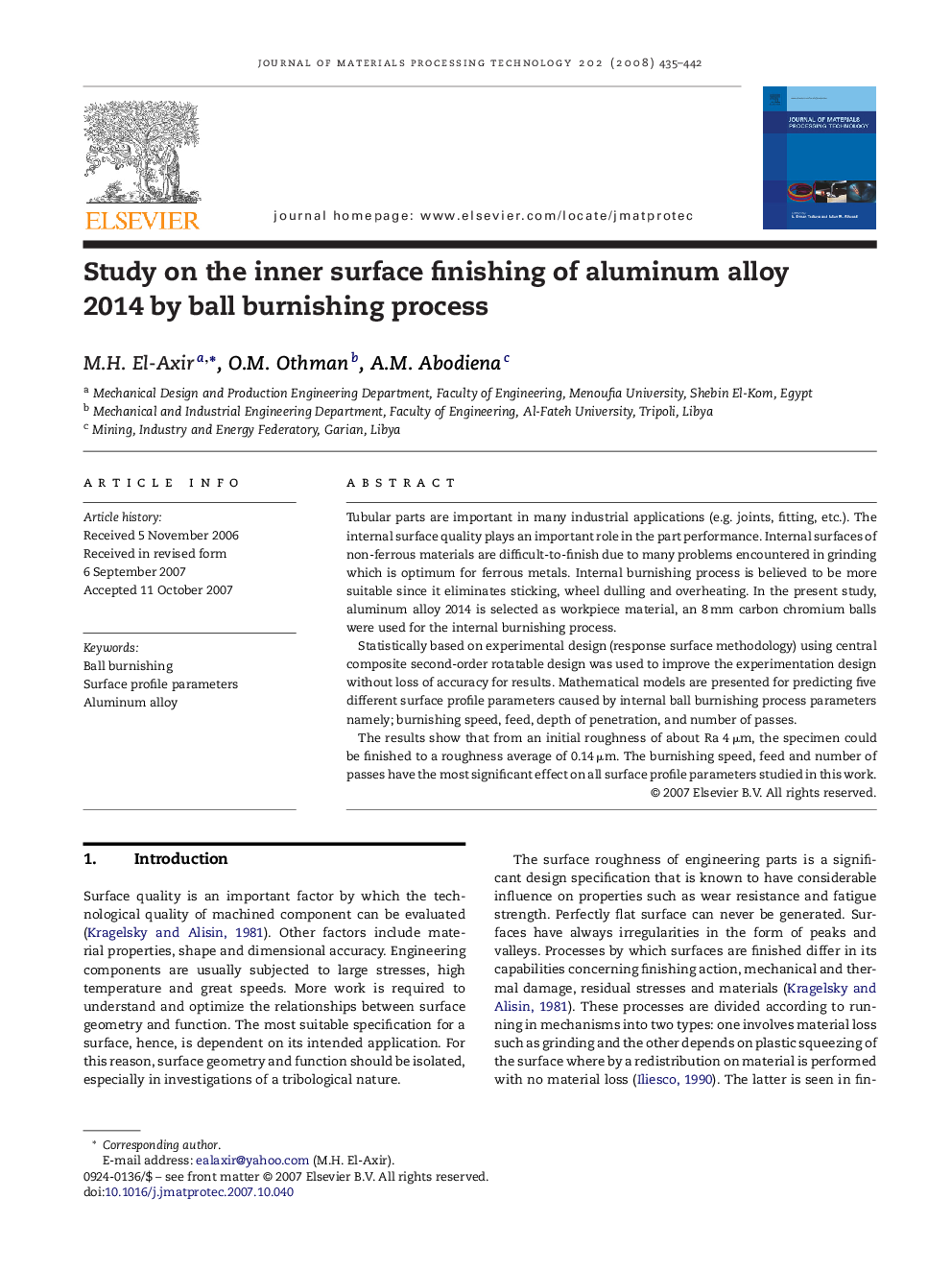| کد مقاله | کد نشریه | سال انتشار | مقاله انگلیسی | نسخه تمام متن |
|---|---|---|---|---|
| 795462 | 1466764 | 2008 | 8 صفحه PDF | دانلود رایگان |

Tubular parts are important in many industrial applications (e.g. joints, fitting, etc.). The internal surface quality plays an important role in the part performance. Internal surfaces of non-ferrous materials are difficult-to-finish due to many problems encountered in grinding which is optimum for ferrous metals. Internal burnishing process is believed to be more suitable since it eliminates sticking, wheel dulling and overheating. In the present study, aluminum alloy 2014 is selected as workpiece material, an 8 mm carbon chromium balls were used for the internal burnishing process.Statistically based on experimental design (response surface methodology) using central composite second-order rotatable design was used to improve the experimentation design without loss of accuracy for results. Mathematical models are presented for predicting five different surface profile parameters caused by internal ball burnishing process parameters namely; burnishing speed, feed, depth of penetration, and number of passes.The results show that from an initial roughness of about Ra 4 μm, the specimen could be finished to a roughness average of 0.14 μm. The burnishing speed, feed and number of passes have the most significant effect on all surface profile parameters studied in this work.
Journal: Journal of Materials Processing Technology - Volume 202, Issues 1–3, 20 June 2008, Pages 435–442